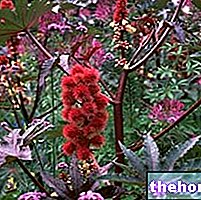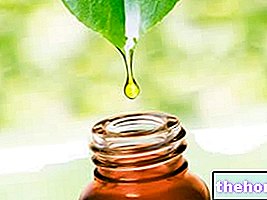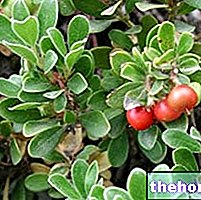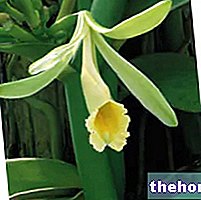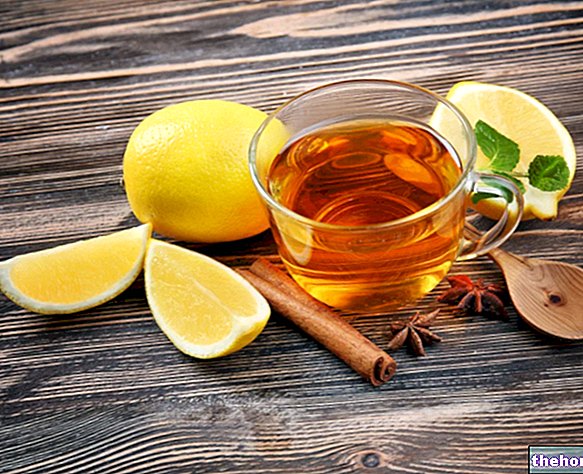Introduction
The name "Rosa canina" is used indiscriminately both in the botanical nomenclature - indicating, respectively, the genus and the species - and, usually, in the common language. In some Italian regions, the dog rose is simply called "grattacu" or, again, wild rose, hedge rose, thorn rose, rosella, scrub rose, plum roses and whitish.

In the language of flowers, the rose hip symbolizes both poetry and independence. It is even mentioned in the Bible: probably, Judas used the rose hip tree to commit suicide; again, the crown of thorns of Jesus was presumably made with the branches of this shrub.
General characteristics
Recently, the demand for rose hips has grown exponentially, especially in teas and herbal teas: its aroma - particular and sweetish - modulates the taste of many other drugs less pleasant to the taste, as well as exerting important medicinal virtues that we will analyze in detail during the course of the disquisition.
Dog rose is a very common shrub in the undergrowth and in ruderal places: in general, it is widespread in the European belt from the Mediterranean to Scandinavia, in Central and Western Asia, in the Canaries and in North Africa. In America, in New Zealand and in Oceania, the dog rose was introduced there instead.
The little plant grows up to 1,900 meters above sea level, and prefers limited arid areas, with loamy and deep soil.
Botanical description
Dog rose is a shrub belonging to the Rosaceae family: the woody plant generally does not exceed three meters in height.

The flowers bloom in spring, decorating the plant with small white spots: the scarlet flowers are single or grouped into three, usually do not exceed 7 centimeters in diameter and are not very fragrant.
Rosehip fruits are fleshy, wrapped in hairy sepals, tinged with scarlet red: more precisely, we are talking about false fruits, the full ripeness of which is reached in late autumn.
Read also: Natural Supplements to Strengthen Immune Defenses
Phytotherapeutic importance and properties
Since ancient times, dog rose has been appreciated for the beauty of its flowers and for their delicate and light fragrance.In ancient times, the petals of the dog rose formed the matrix for extracting a precious oil.
Currently, the drug consists of:
- Ripe dried fruits (fructus), incorrectly called seeds
- Vessels lacking both real fruit and a large part of the receptacle (pseudofructus sine fructubus)
- Horrid rose (pseudofructus) or false ripe fruit: more specifically, the drug consists of the false fruit thalamus
- Roots (used for decoction)
- Leaves (herbal teas and infusions)
Fruits contain tannins, nicotinic acid, carotenoids, vitamins C and P, riboflavin, malic and citric acids, flavonoids (bioflavonoids: phytoestrogens), pectins and carbohydrates. More specifically, the fruits are a mine of tannins and ascorbic acid: ripe false fruits must contain 5% of ascorbic acid which, after the drying process, drops to 1% following degradation.
Its richness in vitamin C was of great help during the war: the rosehip was used as a substitute for citrus fruits, precisely because of the high content of ascorbic acid. Just think that an "ideal orange of 100 grams provides about 50" mg of vitamin C: for the same quantity, rose hips ensures over 2,200 mg. [taken from the writings of Dr. Bianchi]
Due to the presence of tannins, dog rose is a good natural remedy against diarrhea; moreover, it is recommended in case of debilitation and inflammation. The drug is also considered to be a decent vaso-protector.
Herbal teas, decoctions and infusions obtained with rosehip leaves, flowers or roots are recommended in case of colds and infections, as well as being a mild decongestant and invigorating; rosehip also has immunostimulating and antiallergic properties.
Rosehip is a good diuretic: by stimulating the elimination of toxins through the urine, the drug is useful for counteracting inflammation of the bladder or kidneys.
The drug is also useful in case of heavy menstruation, intestinal catarrhs, hyperhidrosis, conjunctivitis and tissue fragility.
Rosehip seeds are used to make pesticides.
Rosehip is also a plant widely used in cosmetics for the formulation of perfumed waters, anti-aging and anti-wrinkle creams, soothing ointments against sunburn, face masks with a toning, smoothing and astringent action.
For the treatment of sensitive, reddened and particularly delicate skin, we recommend applying compresses based on distilled rosehip water.
Rosa canina in brief »
Select plant Fir Acacia Acerola Sorrel Yarrow Yarrow Yarrow Aconito Adatoda Garlic Agnocasto Agrimonia Alchemilla Alkekengi Aloe Altea Witch Hazel Ammi or Visnaga Pineapple Andrographis Anemone Pulsatilla Angelica Anise Star Anise Japanese Star Anise Bitter Orange Bitter Areca Arnica Harpagophytum Arpagophyte Artemisia Asteragus Basil Asparagus Asparagus Peruvian Asparagus Asparagus Asparagus Hawthorn Boldo Borage Shepherd's Purse Boswellia Bucco Butea superba Cocoa Coffee Cajeput Calamus Calamus Marigold Camedrio Chamomile Roman Chamomile Camphor Cinnamon Ceylon Maidenhair Capuchin Artichoke Cardamom Cardiac Thistle Asian Thistle Carvi Cascara Cassia Catecu Catha Cabbage Celandine Chicory Centaurea Cinnamon Cypress Celandine Chives Cypress Coca Cola Colchico Combreto Condurango Comfrey Coriander Cranberry Barberry American Chrysanthemum Cumin Turmeric Damiana Digital Dioscorea Drosera Dulcamara Dunalilella Echinacea Eder a Ephedra Elenio Eleutherococcus Helichrysum Evening primrose Horsetail Alfalfa Erica Euphrasia Erisimo Escolzia Eucalyptus Farfara Farfaraccio Calabar bean Fenugreek Fennel Phytolacca Frangola Ash Fumaria Japanese Mushrooms Galega Ganoderma lucidum Garcinia Cambogia Mulberry Gentian Broom Ginkgo Ginkgo Guipana Guipana Gynestra Ginkgo Hibelia Gymnasium Hibiscus Guarulp St. John's Wort Horse Chestnut Ispaghul Hyssop Jaborandi Kava kava Konjac Laminaria Cherry Laurel Lavender Lemongrass Lespedeza Lovage Icelandic Lichen Lemon Flax Lippia Licorice Lobelia Hops Maca Marjoram Maize Mallow Manna Marrubio Marrubio d "water Matè Melaleuca Meliloto American Lemon balm Myrtle Myrama Walnut Nutmeg Walnut vomica Olive tree Meadowsweet Ononide Opuntia Oregano Orthosiphon Nettle Poppy Papaya Parietaria Feverfew Passiflora Chilli Perilla Periwinkle Phyllanthus Plantain Picrorhiza Pilosella Pino Pisci dia Podofillo Polygala Grapefruit Parsley Psyllium Pueraria mirifica Butcher's broom Pygeum Quassia Oak Rhubarb Ratania Rauwolfia currant Castor bean Rhodiola Rosehip Rosemary Rue Willow Sarsaparilla Sage Elderberry Sassafras Sedum Ergot Senna Serenoa Repens Soybean Solidago Tansy Taraxus Tamarind Tamarind Tamarind Tamarind Tamarindo Ursina Valerian Vanilla Mullein Verbena Veronica Viburnum Vinca Pansy Mistletoe Vine Withania Yohimbe Saffron Ginger Pumpkin Select disease Juvenile Acne Rosacea Tinnitus Tinnitus Aerophagia Tendon Affections Afonia Aphthae Algias Functional Halitosis Breastfeeding Allergy Anemia Anguish Anxiety Arteriosclerosis Asthrosis Asthrosis Arthritis Arthritis Men Sex Woman Blepharitis and Conjunctivitis Eye bags Bronchitis Gallstones Kidney stones Salivary stones Baldness Androgenetic Candida Fragile hair Caries Headache Cellulitis Motion sickness Cystitis C limaterio Cholecystopathy High cholesterol Ulcerative colitis Colonoscopy Contusions Hematoma Convalescence Couperose Depression Dermatitis Diaper dermatitis Diabetes Diarrhea Erectile dysfunction Dyslipidemia Dysmenorrhea Dyspepsia Disturbances of vision Hemorrhoids Epistaxis Herethism Heart disease Fever Fibromyalgia Gastro-intestinal disease Flatulence Hypertension Fibromyalgia Gastrointomnia Jaundice Laryngitis Renal lithiasis Toothache Sore throat Thinness Menopause Meteorism Mononucleosis Alzheimer's disease Crohn's disease Nausea Vomiting Obesity Dark circles Onychomycosis Osteoporosis Dry skin Periarthritis Piorea Low pressure Prostatitis Psoriasis Colds Breast fissures Anal fissures Gastro-nasal rhinitis Senescence Premenstrual Syndrome Sinusitis Quit smoking Overweight Fatty liver Constipation Stomatitis Stress Cough Triglycerides high Ulcer Burns Nails Brittle flashes Heat Warts Dizziness Properties herbal Tanning Abortive adaptogenic Aphrodisiac bittering analgesic anesthetic anorectics analgesic antacid anti-allergic anti-asthmatic Antibiotic catarrh Anticellulitiche anticonvulsant Antidiaforetiche antidiarrheal edematous anthelmintic antiemetic Antiemorroidarie antiphlogistic Antiidrotiche Antinevrotiche Antioxidants antipyretic antirheumatic antiscorbutic Antiseptic antispasmodic anti-uric Aperitive Flavoring Astringent Balsamic Bechiche Capillarotrope Cardiotonic Carminative Cathartic Caustics Healing Cholagogues Choleretic Dyes Decongestants Deodorants Purifying Diaphoretic Cleansers Disinfectants Detoxifiers Thirst quenching Diuretics Exciting Emetics Emmenagogues Emollients Hemostatic Energies Hepatoprotectors Expectorants Eupepticus Moisturisers Galactosensitizers lanti Hypertensive Hypnotic Hypoglycemic Hypotensive Irritants Laxatives Soothing Narcotic Nerves Nutrients Odontalgic Pectoral Purgative Revulsive Remineralizing Refreshing Rubefacient Scialagoghe Sedative Soporifugas Sneezing Stomachic Stomatics Narcotic Vascular Tightenitis

